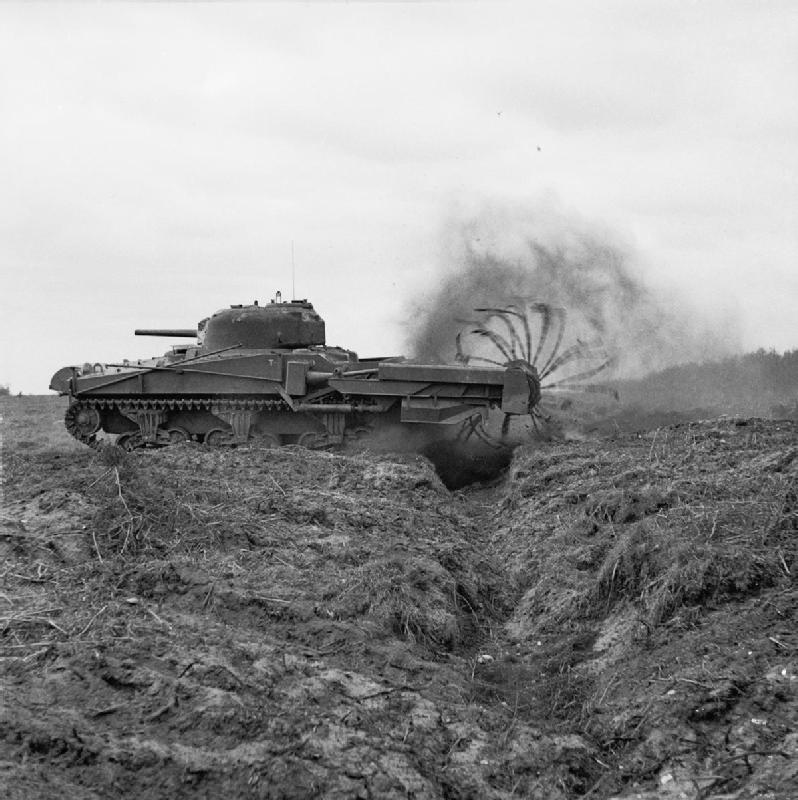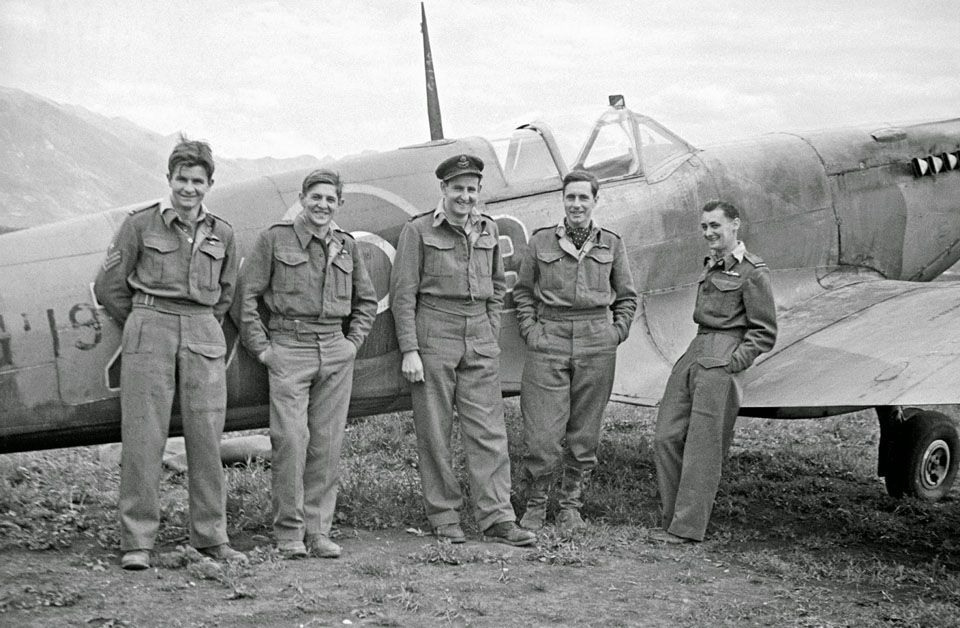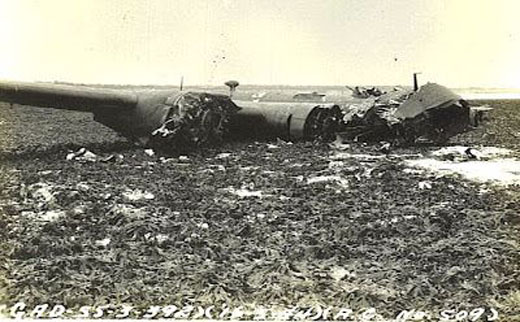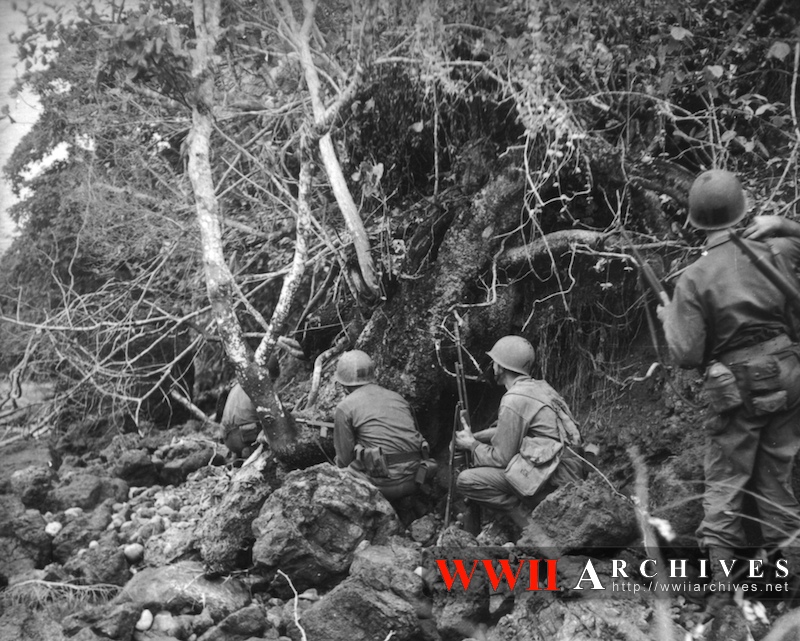Air Operations, Carolines
- 41st Medium Bomb Group B-25s attack Ponape Island.
- 307th Heavy Bomb Group B-24s attack the Truk Atoll.
- During the night, 307th Heavy Bomb Group B-24s attack the Truk Atoll. 1 B-24 is lost.
Air Operations, CBI
BURMA- 12 10th Air Force B-25s attack storage areas at Kalemyo.
- 12 B-25s attack rail targets around Shwebo.
- 24 A-31s attack Japanese Army positions near Buthidaung.
- Nearly 150 B-25s, fighter-bombers, and fighters attack dumps, rail targets, and gun emplacements in the Mogaung Valley.
- 14th Air Force P-40s attack junks near Shasi with aerial rockets.
- 36 10th Air Force A-31s attack the Kanglatongbi and Kohima areas.
Air Operations, Europe
There is a night raid by the Russians on Lvov.
RAF BOMBER COMMANDEvening Ops:
- 322 Lancasters and 1 Mosquito of Nos. 1, 3, 6 and 8 Groups are sent to Friedrichshafen.
- This is a raid with some interesting aspects. The Air Ministry has urged Bomber Command to attack this relatively small town in moonlight because it contains important factories making engines and gearboxes for German tanks. However, the flight to this target, deep in Southern Germany on a moonlit night, is potentially very dangerous. The disastrous attack on Nuremberg had taken place only 4 weeks previously in similar conditions. Friedrichshafen, however, is farther south and on the fringe of the German night-fighter defenses. For this reason and the various diversions which confuse the German controllers, the bombers reach the target without being intercepted. 1,234 tons of bombs are dropped in an outstandingly successful attack based on good Pathfinder marking. Bomber Command later estimates that 99 acres of Friedrichshafen, 67 per cent of the town's built-up area, are devastated. Several factories are badly damaged and the tank gearbox factory is destroyed. When the American bombing survey team investigates this raid after the war, German officials say that this was the most damaging raid on tank production of the war.
- The German fighters, however, arrive at the target while the raid is going on and 18 Lancasters are lost.
- 223 aircraft are sent to Aulnoye. In this total are 191 Halifaxes, 16 Lancasters and 16 Mosquitos. The bombing is concentrated and much damage is caused to the railway yards.
- 1 Halifax is lost.
- 144 aircraft are sent to attack the railway yards at Montzen on the French-Belgian border. In this total are 120 Halifaxes, 16 Lancasters and 8 Mosquitos.
- The bombing force, particularly the second of the 2 waves, is intercepted by German fighters and 14 Halifaxes and 1 Lancaster are shot down. Only one part of the railway yards is hit by the bombing. The only Lancaster lost is that of Squadron Leader E. M. Blenkinsopp, a Canadian pilot of No 405 Squadron who was acting as Deputy Master Bomber. Blenkinsopp manages to team up with a Belgian Resistance group and remains with them until captured by the Germans in December 1944. He is taken to Hamburg to work as a forced laborer and later dies in Belsen concentration camp 'of heart failure'. He has no known grave.
- 159 OTU aircraft carry out a diversionary sweep over the North Sea, 24 Mosquitos make a diversionary raid to Stuttgart, 8 Halifaxes lay mines off Brest and Cherbourg, 44 aircraft are involved in Resistance operations, and there are 11 RCM sorties, 19 Serrate and and 6 Intruder patrols.
- 1 Serrate Mosquito is lost.
BELGIUM:
- On their second mission of the day, 118 3rd Bomb Division B-17s divert from their primary target in France because of cloud cover. 98 attack the Le Culot Airdrome and 20 attack the Ostend/Middelkerke Airdrome.
- 2 B-17s are lost
- One squadron of 353rd Fighter Group P-47s dive-bomb the Florennes/Juzaine Airdrome with 100-pound bombs before rendexvousing with the heavy bombers to provide withdrawal support.
- Due to ongoing poor weather conditions over Germany, 8th Air Force heavy bombers are used to bolster the 9th Air Force's offensive against transportation targets and V-weapons sites in France. In all, 307 1st and 3rd Bomb Division B-17s and 169 2nd Bomb Division B-24s attack 21 of the 25 briefed and five unbriefed V-weapons sites in the Cherbourg and Pas-de-Calais areas.
- 5 heavy bombers are lost
- Escort for the heavy bombers is provided by 357 VIII Fighter Command fighters. No Luftwaffe aircraft are claimed.
- 2 fighters are lost with their pilots
- Finding their primary target obscured by clouds, 36 20th Fighter Group P-38s, led by a 'droopsnoot' model, attack the Albert/Meaulte Airdrome with 1,000-pound bombs. However, one P-38 squadron mistakenly attacked by P-47s is force to jettison its bombs.
- 53 55th Fighter Group P-38s, led by a 'droopsnoot' model, attack the Roye/Amy Airdrome with 1,000-pound bombs.
- 23 356th Fighter Group P-51s dive-bomb the Cormeilles-en-Vesin Airdrome.
- In the 8th Air Force's second round of heavy-bomber missions for the day, 103 1st Bomb Division B-17s attack the Nancy/Essay Airdrome; 60 1st Bomb Division B-17s attack the Toul/Croix de Metz Airdrome; and 118 and 72 2nd Bomb Division B-24s, respectively, attack the marshalling yards at Blainville-sur-L'Eau and Chalons-sur-Marne.
- 2 B-17s are lost
- Escort and support for the afternoon heavy-bomber missions are provided by 543 VIII Fighter Command fighters. 4 Luftwaffe FW-190s are downed by 5 356th Fighter Group P-47s at 1730 hours.
- 4 VIII Fighter Command fighters are lost with 3 pilots
FRANCE:
- Nearly 450 IX Bomber Command B-26s and A-20s, along with 275 9th Air Force P-47 and P-51 dive-bombers, attack coastal batteries, gun emplacements, military encampments, airdromes, and marshalling yards in France and Belgium.
ITALY:
- Bad weather grounds the 12th and 15th Air Forces, except for a small number of XII TAC P-40s that are able to attack a supply dump near Rome.
Air Operations, New Guinea
- 9 V Bomber Command B-24s attack Babo.
- More than 100 B-24s, B-25s, and A-20s attack Kairiru and Muschu islands, and airfields at Boram, But, Dagua, and Wewak.
- More than 120 A-20s and V Fighter Command fighter-bombers attack targets throughout the Hansa Bay area.
- 23 V Bomber Command B-24s and 43 B-25s air-drop rations on Hollandia Airdrome for US Army ground troops in the area.
- During the night, a lone Japanese bomber evades ground radars and bombs a US Navy transport off the Aitape area.
Baltic Sea
Being worked up just days from her first intended cruise U-803 strikes a sea mine and sinks in the bay off Swinemünde.
| Class | Type IXC/40 |
| CO | Kapitänleutnant Karl Schimpf |
| Location | Baltic, near Swinemünde |
| Cause | Mine |
| Casualties | 9 |
| Survivors | 35 |
CBI
BURMAIn upper Burma the last preparations are made for the offensive against Myitkyina and for the despatch from China, across the Salween River, of 2 chinese divisions from Force Y, the Yunnan Force, trained by the Americans. Gen Merrill, who has recovered from his illness, will lead the Marauders. Chiang Kai-shek arranges the details for the assault across the Salween with Gen Wei Li-huang by telephone. Gen Wei has replaced Gen Chen Cheng as Chinese commander of Yunnan forces. Myitkyina's airfield will allow 10th Air Force fighters to escort air supply missions flying the Hump route into China. Control of Myitkyina is an essential requirement allowing the construction of the Ledo Road to China.
INDIAIn India the British IV Corps puts up a desperate resistance against the Japanese forces, waiting for the monsoon rains to come and paralyze all operations in the region. The Japanese hold 6 miles of the trail from Imphal to Siulchar. The 17th and 20th Indian Divisios, concentrated north of Imphal, are moved south of the town to block the enemy advance.
Torrential downpours complicate movement in the Kohima area. In central Kohima, a stubborn Allied resistance around features such as Garrison Hill is devastating Japanese forces. The British retake the important road junction around the district commissioner's bungalow. The Japanese and British settle into entrenched positions less the 72 feet apart around the Tennis Court and begin an horrific two-week, close-quarter battle.
[Eastern Front
SOUTHERN SECTORAfter a protracted arty barrage, the Coastal Army launches a fierce attack upon the V Corps holding the southern perimeter of the Sevastopol defenses. Despite bitter fighting the Soviet troops fail to take the Sapun Heights.
[English Channel
3 American LSTs, carrying out invasion exercises, are torpedoed by MTBs in Lyme Bay. 638 are killed.
[Italy
The Polish II Corps takes over the Monte Cassino sector from the British XIII Corps.
[New Guinea
MacArthur has already decided on new objectives for the invasion forces: an offensive against Sarmi and Wadke Island on May 15, landing on Biak Island towards the middle of June. The object is not to occupy territory but to wipe out the Japanese 18th Army.
In the Hollandia area, the Cyclops airfield is ready for limited use as engineers continue working on the airfields. Elements of the 186th Infantry reconnoiter two islands in Lake Sentani as well as the northern shore of the lake. The 162nd Infantry seizes Cape Soeadja, at the northwest limits of Humboldt Bay.
[Pacific
- The US submarine Bluegill (SS-242) sinks the Japanese light cruiser Yubari southwest of the Palau Islands.
- The Japanese minelayer Kamome is sunk by the US submarine Halibut (SS-232) off the Ryukyu Islands.
- The US submarine Seahorse (SS-304) attacks a Japanese convoy about 150 miles west of Saipan and sinks the transport Akigawa Maru (5244t).
- The US submarine Trigger (SS-237) attacks a Japanese convoy about 90 miles north of Palau and sinks the transport Moke Maru (11,249t).
Images from April 27, 1944
|
|
|
|



